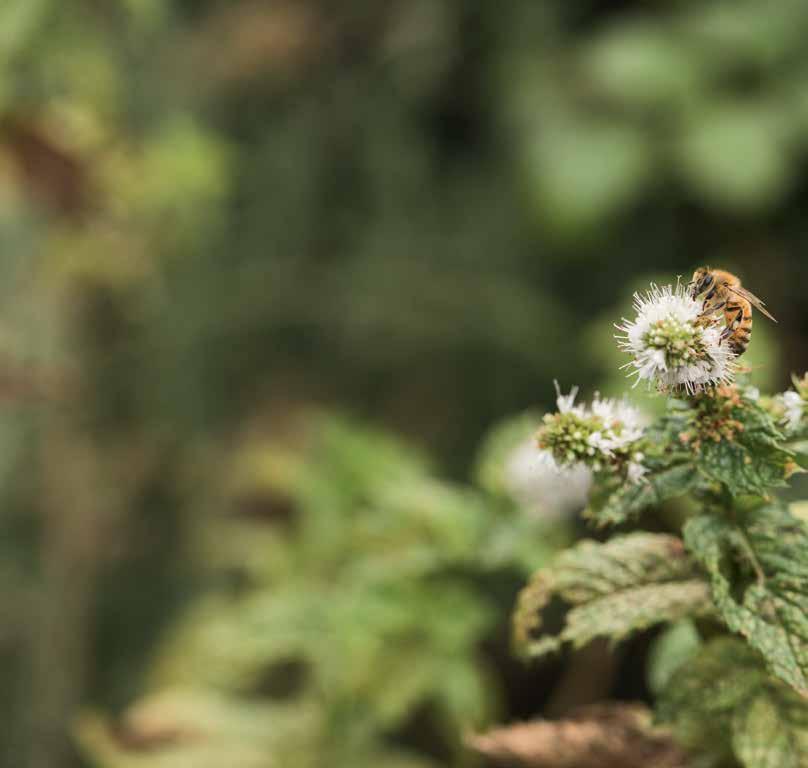
3 minute read
Gardening
Let it Be
WORDS LYNDA HALLINAN | IMAGES ASHLEE DECAIRES
When I find myself in times of gardening trouble, I reckon the best remedy is to simply think of Paul McCartney's mother Mary and, well, let it be. Powdery mildew a plague on your pumpkin vines? Let it be. Can't see the woods for the weeds? Let it be. Lawn barely alive after a long summer without rain? Let it be. Radishes run to seed? Let it be. Birds pecking holes in your unripe autumn pears? Let them be, too. Last spring, I had no choice but to let it be because, on the eve of the biggest planting weekend of the year, I broke my foot in an ill-fated return to the netball court for the first time in 25 years. Thus, while my fellow gardeners laboured in their vegetable plots, I sulked indoors on crutches with a cantankerous constitution. Consequently, I can count the number of hours I've worked in my vegetable garden since Labour Weekend on one hand, which means there's now nothing to harvest but rhubarb, a few spuds, self-sown tomatillos, angelica stalks and perennial 'Scarlet Runner' beans. The parsnips, leeks, dill and coriander all bolted to seed, my asparagus bed is an unruly forest of fronds, and the weeds are in control as opposed to under it. (On the plus side, I now have free dill and coriander seeds to fill my spice jars, and leek and parsnip flowers for foraged floral arrangements.) Letting it be—at least for a season—has reminded me that growing food shouldn't be a chore. Whether you consider your edible garden to be high or low-maintenance is entirely dependent on whether you're offended by weeds, pests and diseases, overgrown undergrowth or plants that are past their best. All too often we actually make work for ourselves when, if we just learned to let it be, the less there would be to do. The bigger weeds get, for example, the fewer there are to pull out, and the more soil each interloper clears upon eviction. Let the bugs be too; they're an integral component of a biodiverse backyard and if you get rid of them all, there'll be nothing for beneficial insects to parasitise. So as your garden winds down with the end of the golden weather, don't be in a rush to clean it up. By all means, snip the heads off weeds before they shed their seeds but let annual herbs and salad greens run wild. Shake, rattle and roll their dry seeds NOURISH | GARDENING

SEED SAVING TIPS · Only save seeds from your best, blight-free tomatoes. Choose a large, healthy fruit and let it ripen fully on a sunny windowsill until it oozes juice. Squeeze the seed pulp into a sieve and run under cold water to clean. Tap onto paper towels to dry. · Dry chillies whole and you’re saving their seeds at the same time. · Let beans (including broad beans) and peas dry fully on the vine, then harvest the pods. Shell out to save. · Don't save the seeds of modern hybrid varieties, or any cucumbers, pumpkins or zucchini. The cucurbit family is notoriously promiscuous and cross-pollinated fruit are rarely worth eating. · To save sunflower seeds for roasting or sprouting, cover the drooping heads with a sack or pillowcase as soon as they bend their necks or birds will beat you to the plump inner seeds. Cut mature heads and store intact. To sprout, just dunk the whole head in a bucket of water, rinse and repeat daily until the green shoots emerge.
Lynda Hallinan Waikato born-and-raised gardening journalist Lynda Hallinan lives a mostly self-sufficient life at Foggydale Farm in the Hunua Ranges, where she grows enough food to satisfy her family, freerange chooks, kunekune pig and thieving pukekos. She has an expansive organic vegetable garden and orchards and is a mad-keen pickler and preserver.


Sat 4th April @ secret Hamilton location Six courses + welcome drink $128pp
LEARN MORE AT kitchentakeover.co.nz/feast










